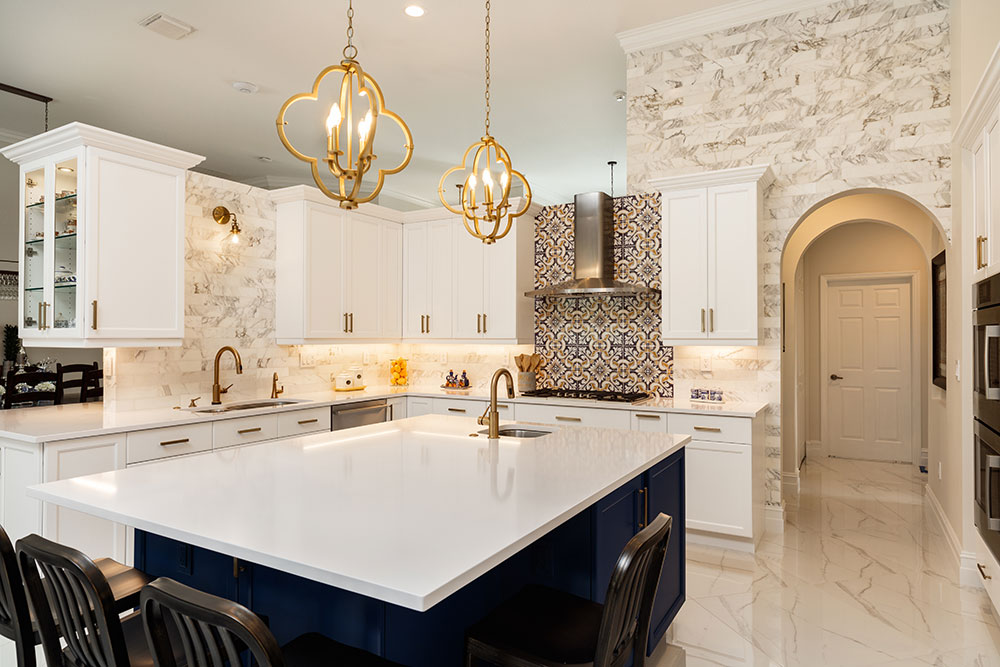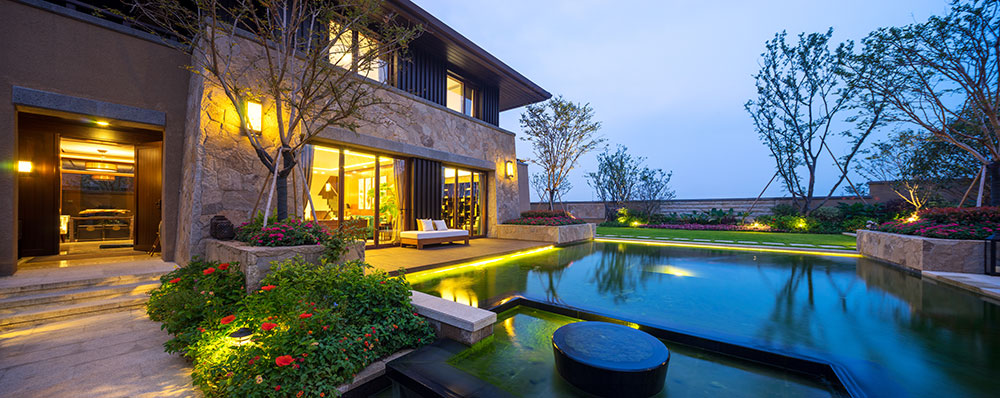Advertisement
Providing your home with the ideal lighting will make your space genuinely inviting and attractive while also boosting the overall value. There are various factors in creating the perfect lighting setup in your home, so it’s crucial to know the basics.
The light bulb, colors, and the type of lighting fixtures can affect the overall design. Depending on the style that you want to achieve with lighting, you can make your home a lovely space with the correct lighting elements in place. Today, there are several reputable lighting providers, including https://washingtonoutdoorlighting.com, that you should check out if you want to learn more about their services.
What are the Types of Lighting?
The different type of light in your house belongs to the following categories below:
- General Lighting: It’s the leading light in the room and popularly called ambient lighting. It covers both light fixtures and natural light from the windows and skylights.
- Accent Lighting: This type of lightning provides illumination to a specific space in a room. A good example is the kitchen island, a reading corner, or an art piece you want to highlight. Accent lighting focuses on specific areas by providing enough light without overwhelming them.
- Task Lighting: This type of lightning utilizes light fixtures and lamps add illumination to a workspace. An example is a desk lamp in an office or vanity lights for makeup applications. Often, a light fixture is part of more than just one category. The kitchen island lights can work both as an accent and task lighting. If you want to add depth and dimension to a room, the best move is to layer several lighting sources together.
What’s the Best Light Temperature?
The temperature of light bulbs is in Kelvin (K), and the majority of houses showcase light bulbs within the 2,000k to 6,500k range. The neutral tones are those around 4,000k to 4,100k. The temperatures lower than 4,000k produce a warm glow, while temperatures higher than 4,100 have a cool light.
Although you’ll have your preferences regarding the color temperature, there are recommendations to help you get started on the right track. The soft, warm lights work best in dens, bedrooms, and family rooms. With a gentle, warm glow, it provides an inviting, relaxed feeling in these kinds of spaces.
As for bright or neutral white bulbs, they’re suitable for spaces where you need clear, bright light, such as the bathroom, kitchen, or powder room, where details are vital. The daylight bulbs are best for workspaces or areas where extra bright light is crucial.
What are the Types of Light Bulbs?
Light bulbs have varying lumens and watts. The lumens measure the brightness and an essential factor for LED bulbs. A bulb with a high lumen level is brighter. The watts are the amount of power a bulb utilizes, which is a vital factor for incandescent, fluorescent, and halogen bulbs. When a bulb has a high wattage, it consumes more energy. Let us check the different types of light bulbs below:
- Incandescent: It’s the most popular type of light bulb with its affordable price range and its warmth. The main drawback is their inefficiency and has an average life span.
- Halogen: A type of incandescent with the same lifespan. A halogen bulb generates a bright white color that is similar to daylight.
- Fluorescent and Compact Fluorescent Bulbs. These bulbs are more energy-efficient than incandescent bulbs and last longer. It’s available in a variety of color temperatures. The drawback is that the fluorescent filaments have traces of mercury, so it’s vital to keep them intact and recycle.
- Light-Emitting Diodes (LED). LEDs are the most energy-efficient and can last for a long time. Although they have a higher price tag, you can recoup the cost with savings on your utility bills.
What are Light Environment Ratings?
It’s important to note that both light fixtures and bulbs have safety ratings indicating the suitable type of environment, depending on the floorplan and climate.
- Dry Rating: Dry lights are only safe to use inside the house. Position these lights in areas without condensation or water, such as dining rooms, hallways, kitchens, living rooms, and closets.
- Damp Rating: This type features extra seals and materials to avert moisture away from the electrical circuits, filaments, and wiring. It’s ideal for vanities, bathtubs, cold storage closets, porches, and covered patios.
- Wet Rating: The wet-rated lights have seals and protection from water to a whole new level. It’s suitable for showers or outdoor fixtures for landscape lighting, wall lights, deck lights, or those exposed to the elements.
Home Lighting by Room
Every area in your house has a specific purpose, and the lighting you’ll select influences the type of environment you want to establish. If you want to learn more about lighting design and installation, watch this video:
Let us check out below what lighting works best for every room in your home below:
Kitchen

The kitchen has more lighting than any other room in the house. As the center or heart of the home, it’s the focal point of almost every activity. Since the kitchen has various purposes, there are a variety of lighting options available. The key to remember is to ensure that the space stays open and bright as much as possible.
You can achieve a clean, bright look for your kitchen by layering different lighting types. For general kitchen lighting, which is the primary light source in addition to the windows, it might be best to go for flush mounts, recessed lights, or large light fixtures. As for accent and task lighting, you can add lights over the island and dining table to highlight these elements. You can also position lights under wall cabinets to deal with shadows and produce a brighter counter space. By layering these lights, it creates an inviting atmosphere for your kitchen.
Living Room
The living room is the ideal space to layer general, accent, and task lighting. Remember that the lighting in the living room showcases your personality or preferred style. You can also match a lighted ceiling fan or a flush mount with some lamps to achieve a classic ambiance. If you want an attractive centerpiece, add a large chandelier. In case you want a subtle approach, go for recessed lights. You can even pair both to create a dazzling atmosphere. You can highlight photos or art pieces with accent lighting or create the ideal corner with task lighting.
Bathroom
For bathroom lightning, you should utilize fixtures with a damp or wet rating. It’s important to note that bathroom lights are flexible when it comes to style and type. Depending on your choices, you can go for recessed lights over bathtubs and showers since it’s a dependable and popular choice for illumination. For a stylish touch to your bathroom, you can also consider chandeliers or pendant light fixtures over drop-in or freestanding bathtubs.
Another design tip is to match other light fixtures with sconces, LED mirrors, or vanity lights to complete your bathroom’s overall look. You can consider vanity lights as ideal additions if you have a slim vanity or small bathroom space. As for the sconces, they work best as pairs to provide the room with even illumination.
Bedroom
Although bathrooms and kitchens depend on bright, even illumination to make the most out of the space, a bedroom focuses on comfort and coziness. Always consider this when selecting suitable light fixtures for the bedroom.
Today, bedroom light fixtures vary from warm and straightforward to brilliantly stylish. If you want a simple lighting design for your bedroom, you can install a ceiling light as the primary source complemented with a pair of bedside table lamps or sconces. For a stylish design idea, you can add floor lamps, track lighting, or even recessed lights to illuminate the space while adding focal points to makes it even more enjoyable.
Outdoor
For the outdoor landscape, you should only use light suitable for wet environments. The light fixtures that you need to place outdoors will depend on various factors such as the size of your house, garage, deck, and yard. Wall light fixtures such as sconces and carriage lights work best in the garage or entry doors. Make sure that you’ll install these light sources above eye level to illuminate visitors without blinding them.
The ceiling lights are suitable for porches and patios. As for post lights, you can install them in any location that you want in your yard. Path lights work best in highlighting the landscaping and walkways, while deck lighting can impart illumination if you have outdoor gatherings with family or friends.
Entryway and Hallway
Your house’s entryway leaves the first impression of your house’s interior while the hallways lead to other rooms. In the entrance and hallway, your eyes will look for something to draw their attention. One way to create a stunning statement is to add a chandelier or pendant light in the entryway. In case your home has a low ceiling, you can consider flush, semi-flush mount, or even recessed lighting. Additionally, if you want to achieve an art gallery effect, you can add track lights or sconces to showcase hangings, photographs, posters, or any unique décor.
Conclusion
If you want to ensure that your house has a suitable lighting scheme, learning all about the basics is vital. The essentials on home lighting above will help you decide on the appropriate lighting fixtures for your home to make it an inviting and attractive space to live in for years to come.

